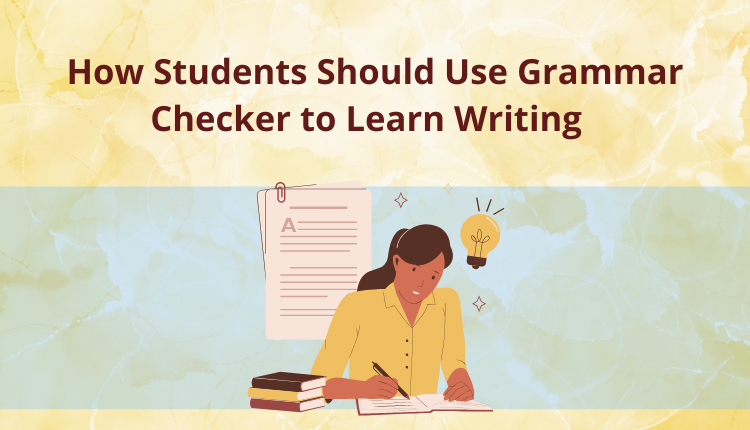In an age where artificial intelligence has become a ubiquitous presence in education, students have a singular challenge in front of them: how to take advantage of AI tools without diluting their genuine writing skills. The response does not lie in shunning AI completely, but rather in learning how to use it as a tool. AI content detectors such as Trinka’s free AI content detector have become effective learning tools that can assist students in becoming better writers through giving them insights into their writing habits and enabling them to produce a more natural, human voice.
Understanding What AI Detectors Reveal About Your Writing
AI content detectors don’t just identify whether text is AI-generated, they analyze linguistic patterns, sentence structure, vocabulary diversity, and stylistic consistency. When students run their writing through these detectors, they receive valuable feedback about areas where their writing might seem mechanical, repetitive, or lacking in personal voice. This feedback is gold for developing writers who want to understand what makes writing feel authentic and engaging.
The trick is to see the detector not as a judge, but as a diagnostic tool. If your initial writing comes back highly marked for AI probability, it is not that you’ve done something wrong, it’s that you’ve pinpointed certain areas of weakness to address. Your sentences are perhaps too formulaic, or your vocabulary selection is too bland. These are things you can fix and fixing them can change your writing for the better.
Using AI Detectors as a Writing Coach
Here’s a practical approach students can adopt write your first draft completely on your own, then run it through an AI content detector. Pay close attention to which sections flag as potentially AI-generated. These sections often reveal your writing habits that need refinement.
Challenge yourself with tough questions regarding the highlighted passages. Are you overusing typical phrases? Is your sentence structure overly consistent? Are you applying clichés rather than original expressions? By recognizing these patterns, you’re really having a masterclass in what makes writing sound real vs. formulaic.
Having taken this feedback, revise your text accordingly and then pass it through the detector for a second time. This iterative approach enables you to see precisely what changes enhance the human quality of your writing. Through repetition, you’ll learn these lessons so well that you’ll be writing more authentically naturally.
Building Vocabulary and Style Awareness
One of the most useful things AI detectors can teach is the value of vocabulary range and stylistic variety. AI writing tends to follow certain patterns: mid-range vocabulary, well-balanced sentence structures, and a pull toward inoffensive, bland expressions. Human writing, on the other hand, is imperfectly lovely, it contains sentence fragments for dramatic effect, the occasional run-on born of enthusiasm, surprising word selections, and individual tics.
Students may employ detectors to see where their writing is lacking and requires more personality. If a paragraph reads highly for AI probability, use the following techniques: add more vivid specifics of your own experience, mix sentence lengths much more dramatically, use more contrasty and surprising adjectives, or insert rhetorical questions that constitute honest curiosity.
Learning to Cite and Integrate AI Help Appropriately
AI detectors also learn a valuable contemporary skill: knowing when and how AI help is inappropriate. Through testing the detector, students can learn to distinguish between using the AI as a brainstorming tool and having it write for them.
For example, you can have the AI come up with topic ideas or build an outline and then write the content yourself. Passing your final draft through a detector ensures that you have kept your natural voice intact all the while. This way, you train the important difference between the use of AI as a complementary tool and AI as a substitute for your own mind.
Developing Critical Self-Editing Skills
Maybe the best advantage of using AI detectors is that they develop good self-editing habits. As you keep examining why some passages trigger AI-like detection, you internalize an editor that can identify these problems before even applying the detector.
You’ll begin to realize when you’re slipping into generic habits while you write. You’ll find yourself resorting to tired transitions or depending on a predictable format. This is the sign of an accomplished writer, one who can critically judge their own work and make intentional decisions about voice and style.
The Future of Writing Education
Trinka.ai’s AI content detector and similar tools represent more than just plagiarism prevention; they’re mirrors that reflect our writing habits back to us. For students willing to engage with them thoughtfully, these tools offer unprecedented opportunities to understand what makes writing effective, authentic, and compelling.
The goal isn’t to “beat” the detector by making AI-generated text undetectable. The goal is to develop such a strong, distinctive writing voice that your original work consistently scores as authentically human. This is achieved not through tricks or workarounds, but through genuine skill development, exactly what education should accomplish.
By embracing Trinka.ai’s free AI content detector as a learning tool rather than an obstacle, students can navigate the AI age while building writing skills that will serve them throughout their academic and professional lives. The writers who thrive in this new landscape won’t be those who avoid AI entirely or those who depend on it completely, but those who understand how to learn from both AI and the tools designed to detect it. With resources like Trinka.ai readily available, every student has access to a sophisticated writing coach that can accelerate their growth as authentic, confident writers.

